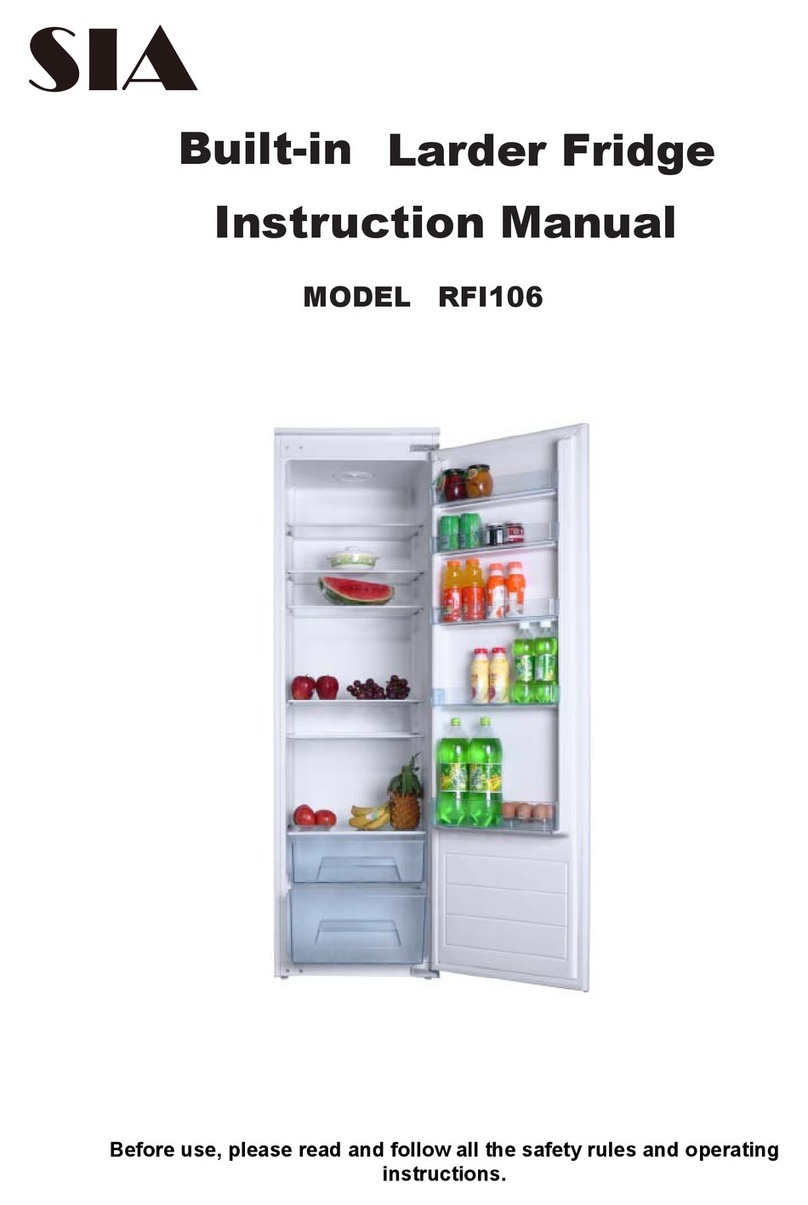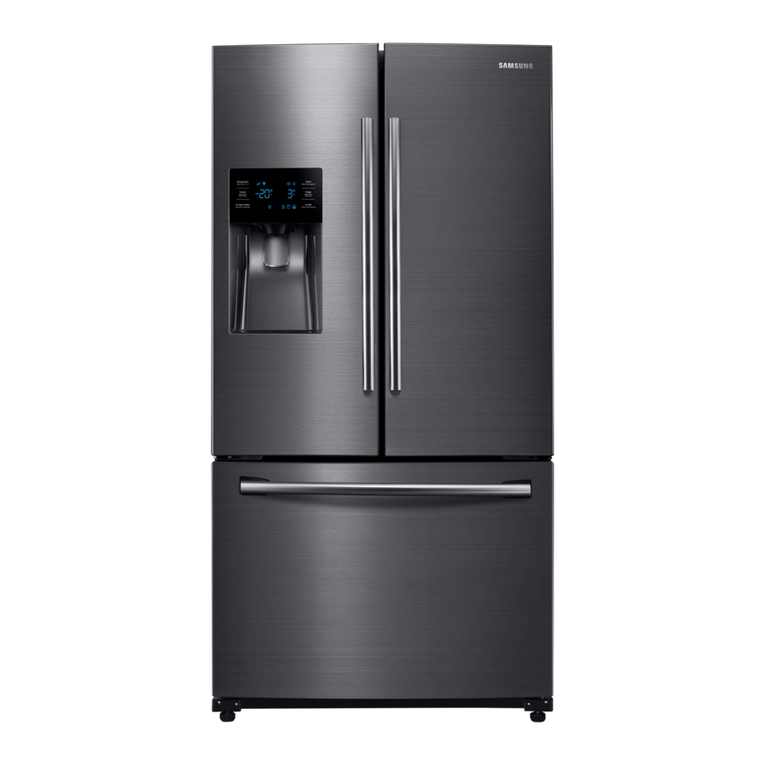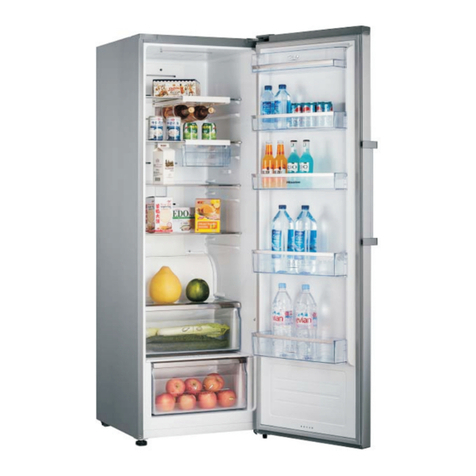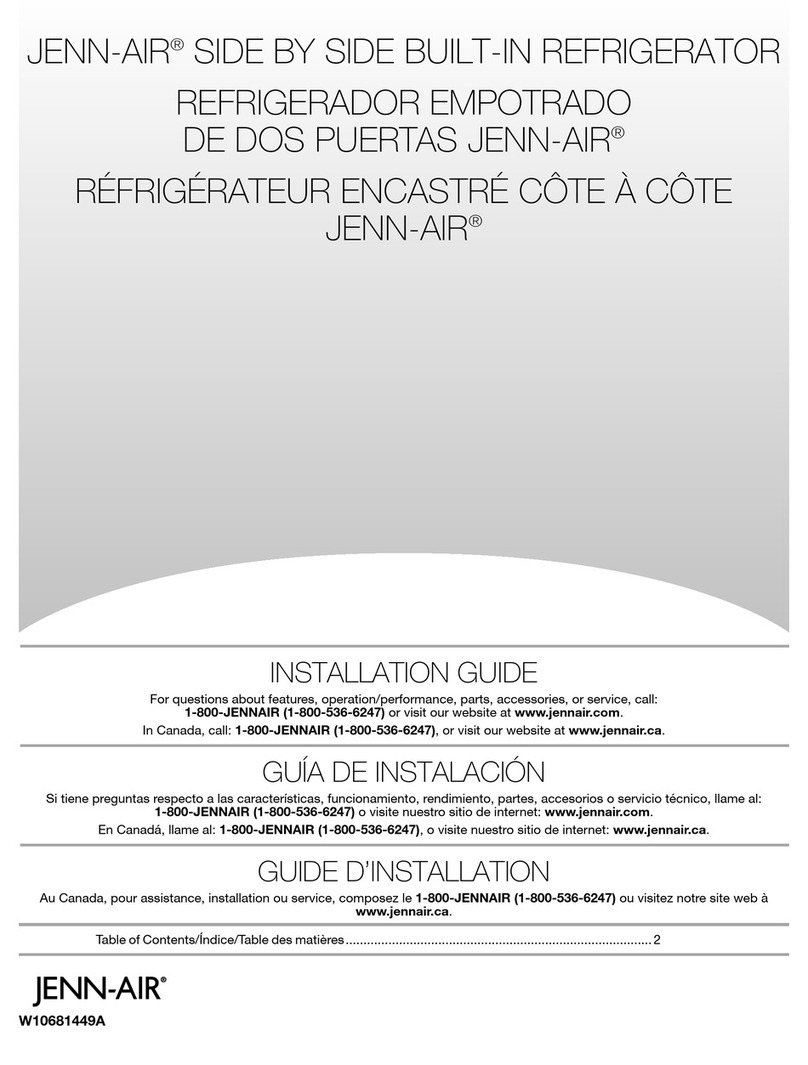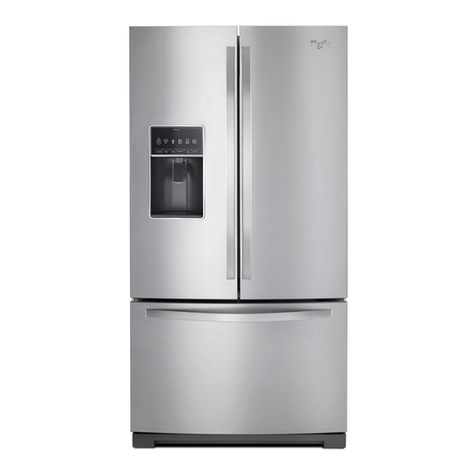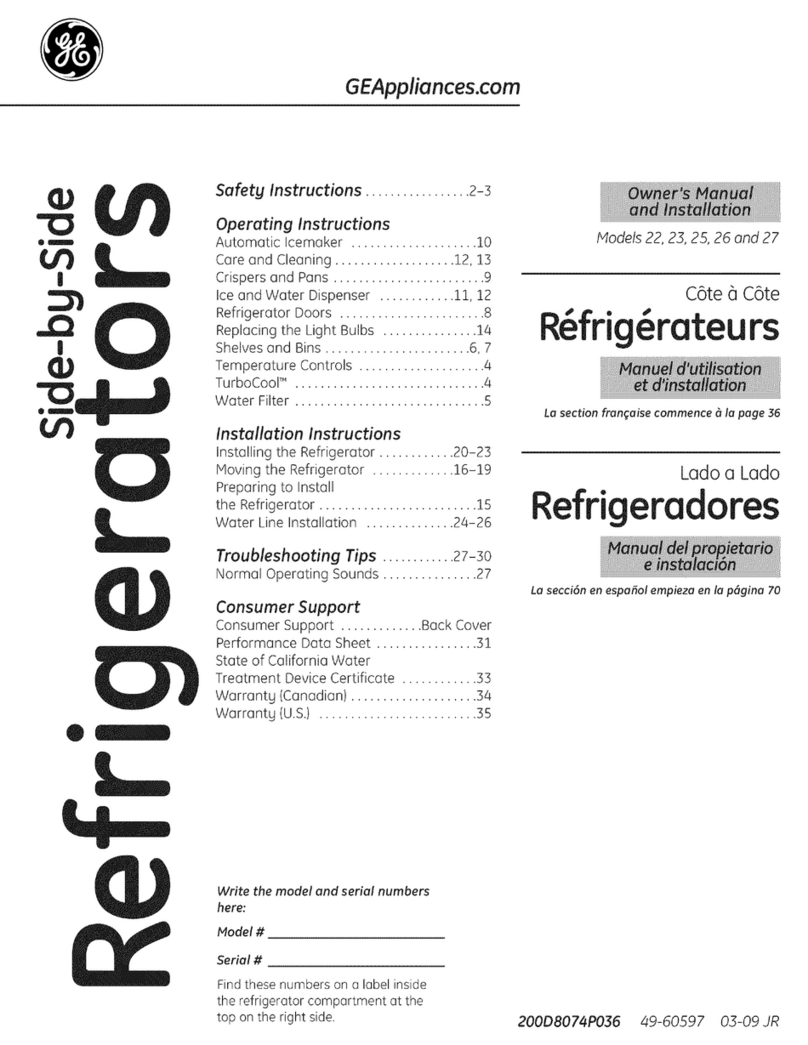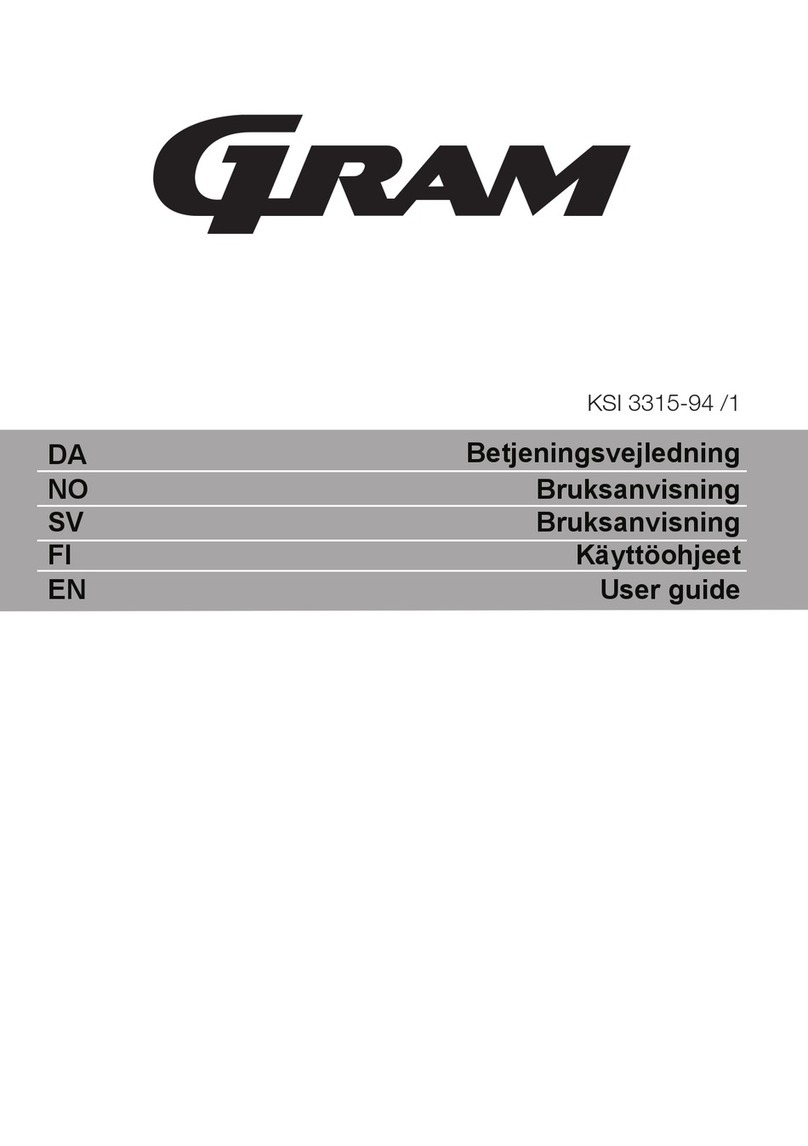SIA RFI107 User manual

SIA
Fridge with Icebox
Instruction Manual
MODEL RFI107
Built-in
Before use, please read and follow all the safety rules and operating
instructions.

~2
Contents
Cautions---------------------------------------------------------------------------------------1~2
Diagram----------------------------------------------------------------------------------------3
Preparation------------------------------------------------------------------------------------3
Operation--------------------------------------------------------------------------------------4
Instruction-------------------------------------------------------------------------------------5~8
Defrosting,cleaning and de-commissioning------------------------------------------9 ~10
Trouble shooting----------------------------------------------------------------------------11

1. Compression-type appliances which use flammable refrigerants shall be marked
with the
symbol “Caution: risk of fire”.
The height of the triangle in the symbol “Caution: risk of fire” shall be at least 15 mm.
2.
– WARNING: Keep ventilation openings, in the appliance enclosure or in the built-in
structure, clear of obstruction.
– WARNING: Do not use mechanical devices or other means to accelerate the defrosting
process, other than those recommended by the manufacturer.
– WARNING: Do not damage the refrigerant circuit.
– WARNING: Do not use electrical appliances inside the food storage compartments of the
appliance, unless they are of the type recommended by the manufacturer.
Do not store explosive substances such as aerosol cans with a flammable propellant in
this appliance.
3.
If the supply cord is damaged, it must be replaced by a special cord or assembly available
from the manufacturer or its service agent.
This appliance is not intended for use by persons (including children) with reduced physical,
sensory or mental capabilities, or lack of experience and knowledge, unless they have been
given supervision or instruction concerning use of the appliance by a person responsible for
their safety.
Children should be supervised to ensure that they do not play with the appliance.
Caution:risk of fire

Cautions
Disposal of the old appliance
Before disposing an old appliance, please make sure it’s inoperative and safe. Unplug
the appliance and remove or destroy all of the springs, latches, or bolt-locks in order to
avoid the risk of child entrapment.
It must be noted that the refrigeration system contains insulating gases and refrigerants,
which require specialized waste disposal. The valuable materials contained in a refrig-
erator can be recycled. Contact your local waste disposal center for proper disposal of
an old appliance and contact your local authority or your dealer if you have any ques-
tion. Please ensure that the pipe work of your refrigerator dose not get damaged prior to
being picked up by the relevant waste disposal center, and contribute to environmental
awareness by insisting on an appropriate, any-pollution method of disposal.
Disposal of the packaging of your new appliance
All the packaging materials employed in the package of your new appliance may be
disposed without any danger to the environment.
The cardboard box may be broken or cut into smaller pieces and given to a waste paper
disposal service. The wrapping foil is made of polyethylene and the polyethylene pads
and stuffing contain no fluorochloric hydrocarbon.
All these valuable materials may be taken to a waste collecting center and used again
after adequate recycling.
Consult your local authorities for the name and address of the waste materials collect-
ing centers and waste paper disposal services nearest to your house.
Safety Instructions and Warnings
Before starting the appliance, read the information given in the User’s Guide carefully.
The User’s Guide contains very important observations relating to the assembly,
operation and maintenance of the appliance.
Keep the User’s Guide in a safe place and remember to hand it over to the subsequent
owner, if you ever sell the appliance.
The manufacturer does not accept responsibility for any damages that may arise due to
non-observation of the following instruction.
*Damaged appliances are not to be put into operation. In case of doubt ,consult your
supplier.
1

2

Refrigerator Diagram
1. Ice box
2. Temperature controller
3. Glass shelves
4
.Vegetable and Fruit tray
5. 6. Bottle racks
This diagram may vary slightly with the layout of the refrigerator you have
just purchased due to technical improvements.
Preparation
Unpacking
Remove all packing materials.
Check attachments and materials
Checking should be conducted with reference to the Packing List. Contact the local
distributor if discrepancies are found.
Ensure proper location of the refrigerator.
*Make sure the refrigerator is kept upright during handling. If an inclination is required,
it should not exceed 45 degrees. Otherwise the appliance may get damaged resulting
not only in compromised refrigeration performance.
*To avoid product damage or personal injury, the refrigerator should be unpacked
by two persons after it is located in a previously selected position.
*Before installation, make sure the refrigerator has no visible exterior damage.
*When handling the refrigerator, do not lift it by holding the worktop, to prevent
any damage to the refrigerator.
*Do not start up a refrigerator that is damaged.
Clean the refrigerator before use.
(See the following section “Cleaning”)
Idle time
After the refrigerator has been sited and cleaned, let it stand for more than 30 minutes
before connecting the power source
3

Caution: Some time will be required for the refrigerator to reach the set level when
temperature adjustments are made. The length of this period is determined by
difference in the existing and set temperatures, the ambient temperature, the
frequency with which the door is opened and closed and the amount of food in
storage.
Caution: If ambient temperature is below 16
℃
, please turn on the “Low-temp
Controller”.
Temperature Controllor
Loading the refrigerator with food
When the refrigerator is switched on, do not load
food until 1~2 hours have passed. Usually, food
for cold storage or deep freezing can be loaded
when the temperature inside the compartment
reaches the set point.
4

Instructions
Cold storage is for short-term food
Storage or for daily consumption.
Although the temperature in most parts of the cold
storage compartment can be regulated between 0
and 10 degrees Centigrade, extended periods of
food storage is not recommended. Cold storage
should only be used for short-term storage.
Cold storage compartment
1. Eggs and butter
2. Pickled food and seasonings
3. Beverages and bottled food
4. Food to be frozen
5. Cookies, cooked food and milk
6. Meat and sausages
7. Fruits, vegetables and salads
5

Lamp & Replacement:
Lamp: 240V, 10W
Lamp holder: E14 (lamps exceeding 15W
must not be used)
* For replacement, unplug to disconnect the
power
* Remove the lamp by turning anti-clockwise
6

7

8

9

10

11

Ship It Appliances Ltd
Unit A, Millennium Business Park
Enterprise Road, Mansfield
Nottinghamshire UK
NG19 7JX
Tel: 01623 625658
Table of contents
Other SIA Refrigerator manuals
